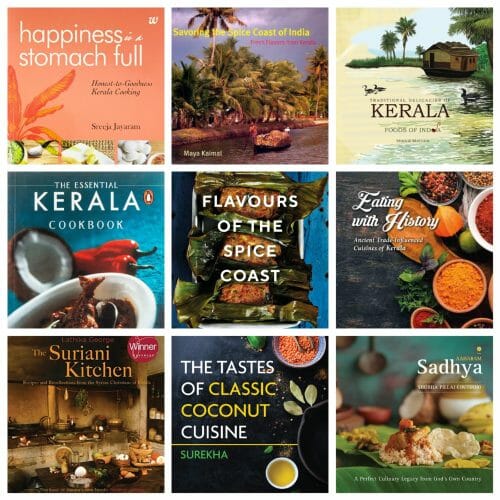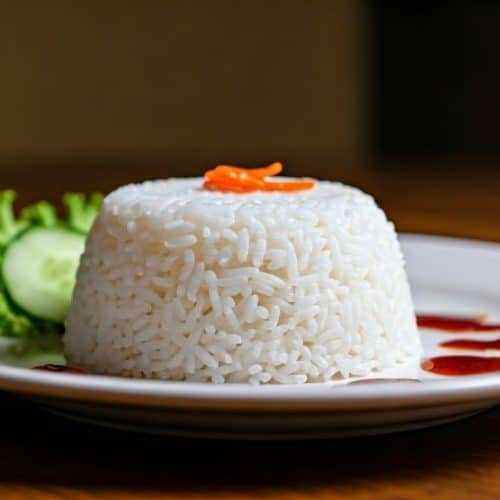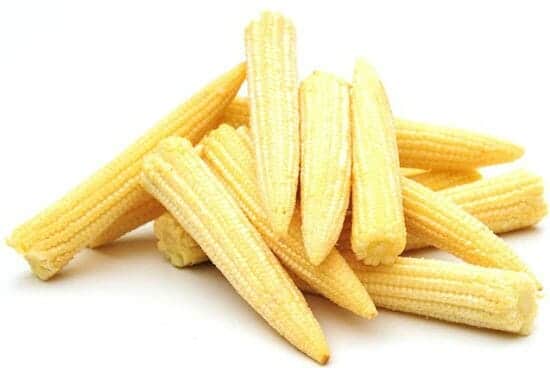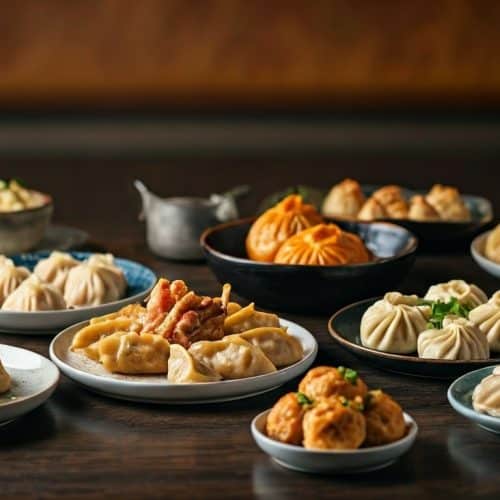Chillies are an integral part of Indian cuisine, celebrated for their ability to bring vibrant colours, tantalising heat, and unmatched flavour to dishes. Each type of chilli adds a unique taste and spice level, enriching the culinary diversity of the nation. In this blog, we have discussed everything you need to know about India’s top varieties of chillies. So, let’s get started!
Importance of Chillies in Indian Cuisine
Indian cuisine is known for its rich blend of flavours and spices, with chillies playing a key role in creating its distinctive taste. They bring the perfect kick to dishes, adding both heat and a pop of colour that makes everything look more vibrant. Each region of India has its signature chilli variety, making them an irreplaceable element in our kitchens. Their unique flavour profiles range from fruity and smoky to sweet and earthy, with a sweet taste also present. Whether it’s the fiery Bhut Jolokia or the mildly spicy Kashmiri Chilli, their spectrum of heat and flavour is unparalleled. Chillies are rich in vitamins like A and vitamin C and have health benefits ranging from improving metabolism to assisting in weight loss and acting as natural pain relievers.
Top Types of Chillies Found in India
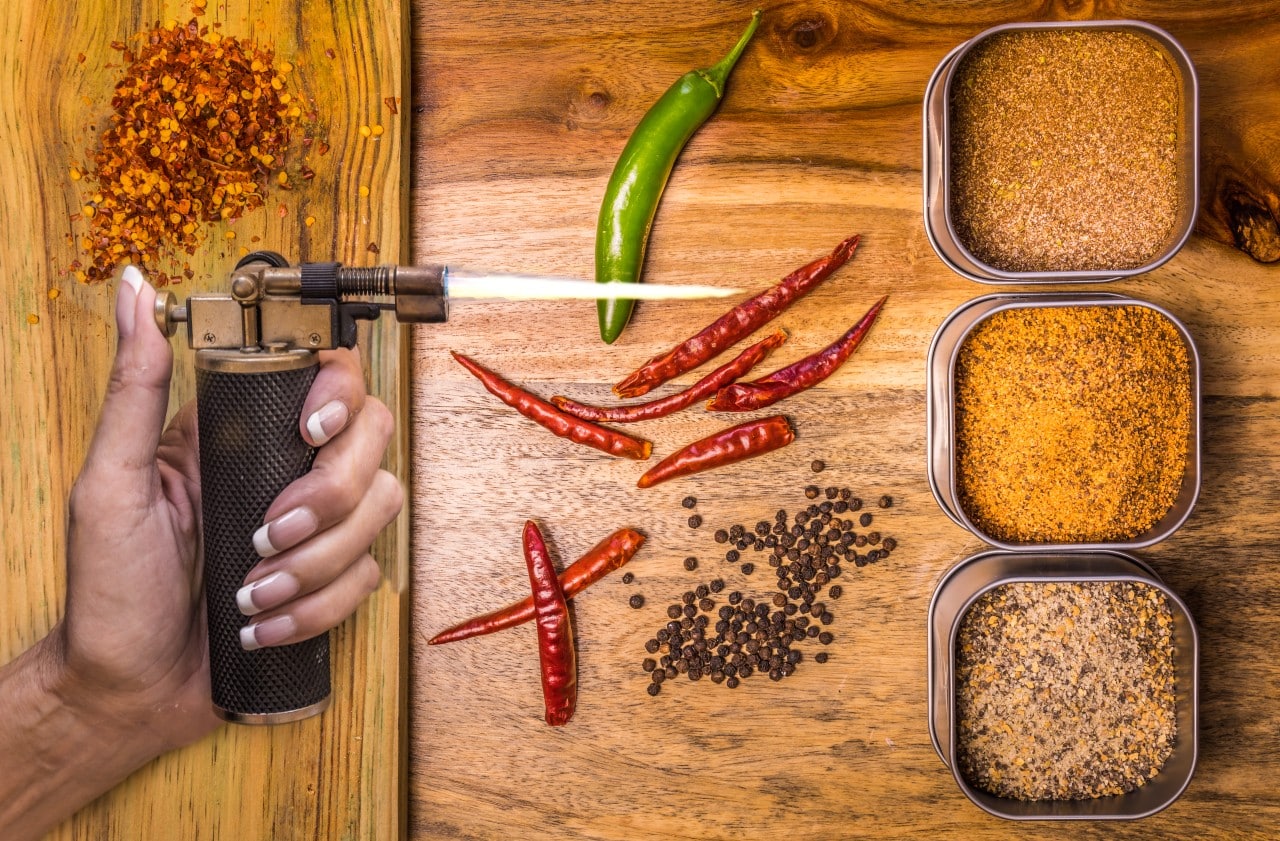
Chillies, spices, blowtorch on wooden background.
Kashmiri Chilli
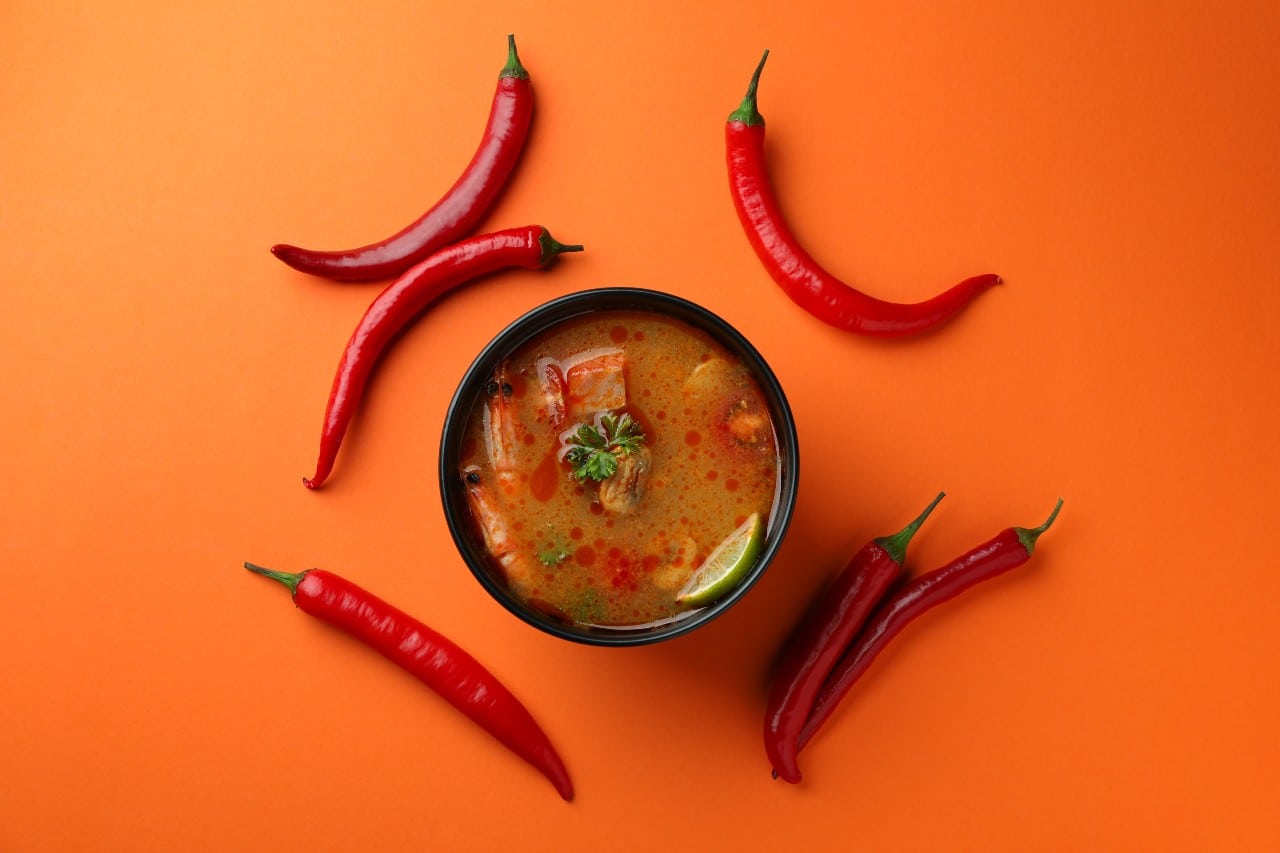
Red chillies encircling soup bowl.
- Region: Kashmir
- Characteristics: Deep red hue, mild heat.
Renowned for its deep crimson hue, Kashmiri chilli is widely cherished as a natural colouring agent in Indian cooking, lending dishes a rich, appealing appearance without contributing too much heat. This makes it an ideal choice for gravies and curries, ensuring they look vibrant and appetising. Its mild spice level allows for generous usage, enhancing the dish’s aesthetics without overpowering the flavours. Kashmiri chilli is also an essential ingredient in preparing tandoori dishes, adding both colour and subtle warmth to the marinade.
Guntur Chilli
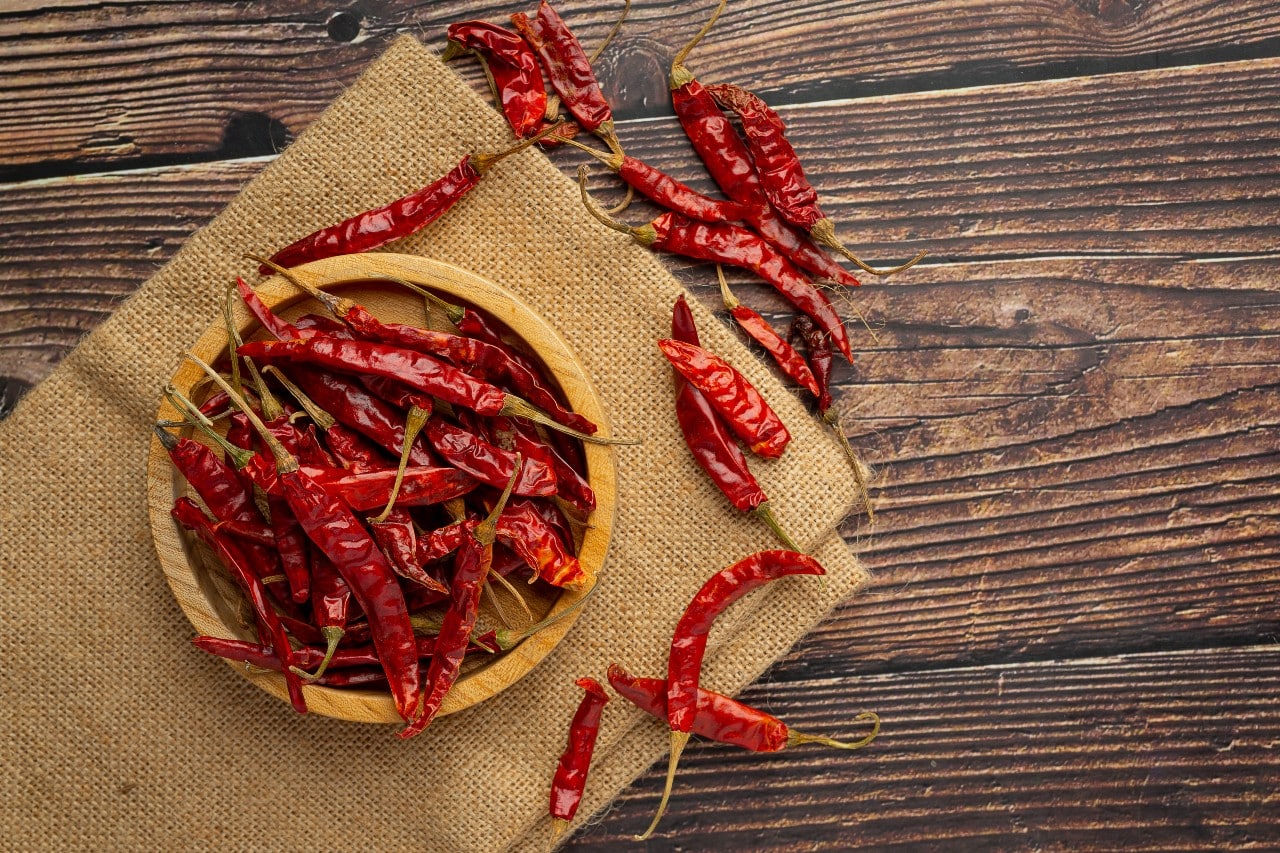
Fresh Guntur chillies with vibrant red colour.
- Region: Andhra pradesh
- Characteristics: High pungency, vibrant red colour.
This spicy variety is a staple in Andhra cuisine and is highly sought after for its intense heat. Grown extensively in the Guntur district, this chilli is a vital ingredient in spice mixes and powders, contributing to the fiery flavour that Andhra Pradesh is famous for. Guntur Chilli is commonly used in chutneys and pickles to impart a sharp, spicy kick.
Byadgi Chilli
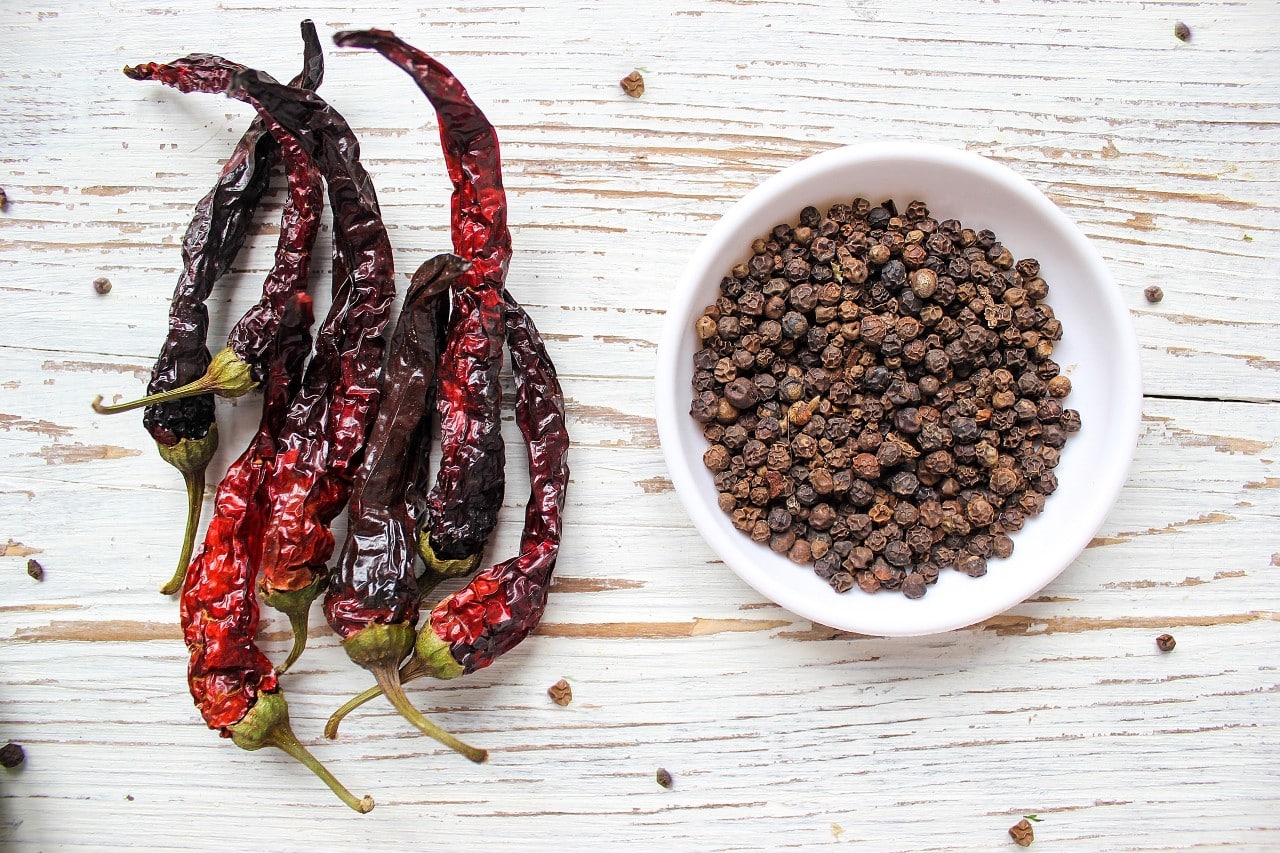
Byadgi chillies with wrinkled skin, wooden background.
- Region: Karnataka
- Characteristics: Mild heat, rich colour.
Commonly used in Udupi cuisine, this chilli is valued for its vibrant hue and balanced spice level. Byadgi chillies are a popular choice for chutneys and masalas, offering a depth of flavour without overwhelming heat. Their wrinkled texture makes them easy to identify, and they are often favoured in making spice blends for commercial use.
Boria Chilli
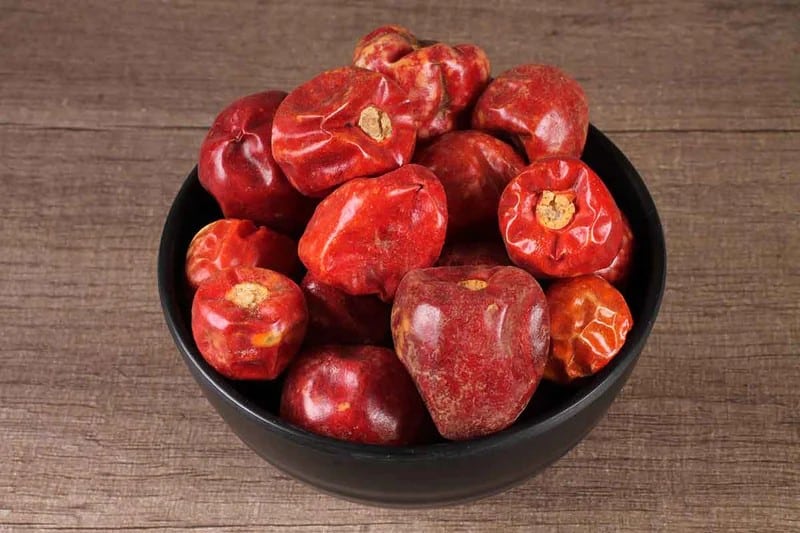
Round red Boria chillies in black bowl.
- Region: Tamil Nadu
- Characteristics: Berry-shaped, moderate heat.
Boria chilli is popular in tempering south Indian dishes, adding both heat and visual appeal. Its unique shape and dark red colour make it a distinctive ingredient in Tamil Nadu’s culinary heritage. For its robust flavour, it’s often used in dry curries, sambar, and pickles. The round shape also allows for even roasting and grinding.
Sankeshwari Chilli
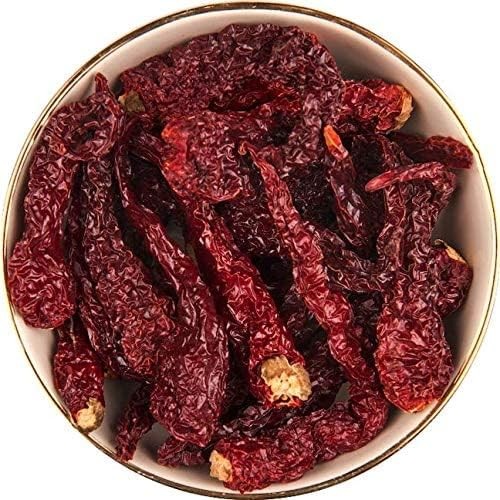
Deep red Sankeshwari chillies in white bowl.
- Region: Maharashtra
- Characteristics: Moderate heat, bright red colour.
A staple in Konkan cuisine, Sankeshwari chillies enhance traditional Maharashtrian dishes. Known for their versatility, these chillies are used in both fresh and dried forms, bringing an earthy heat to curries and snacks. They are particularly popular in Kolhapuri spice blends, adding boldness and intensity.
Mathania Mirch
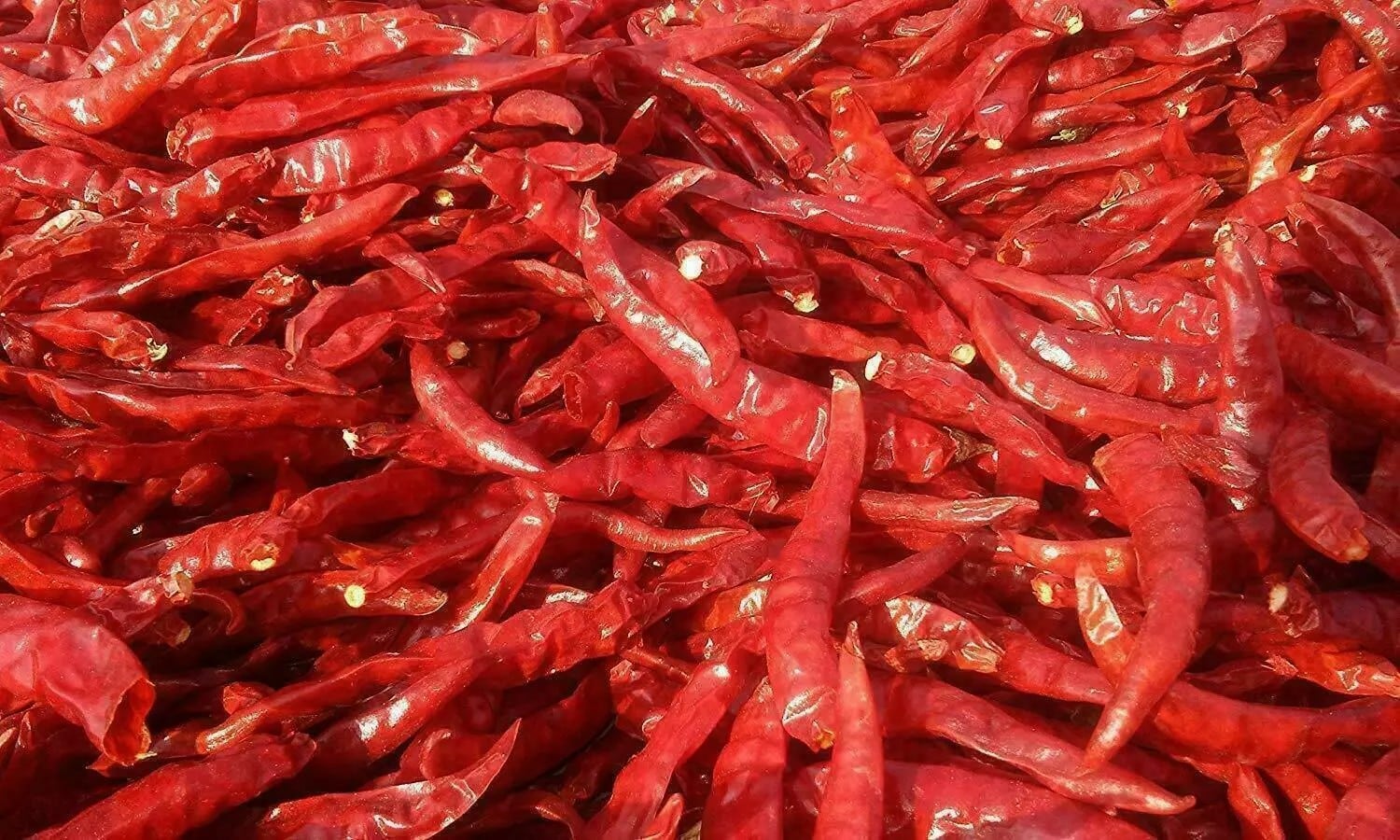
Bright red Mathania chillies spread for drying.
- Region: Rajasthan
- Characteristics: Bright red colour, intense heat.
Known for its fiery punch, it is often used to spice up Rajasthani curries. Mathania Mirch is a key ingredient in famous dishes like Laal Maas, lending its signature heat and colour to the rich gravies of Rajasthan. This chilli is often sun-dried and ground into powders for convenience and extended use.
Bhut Jolokia
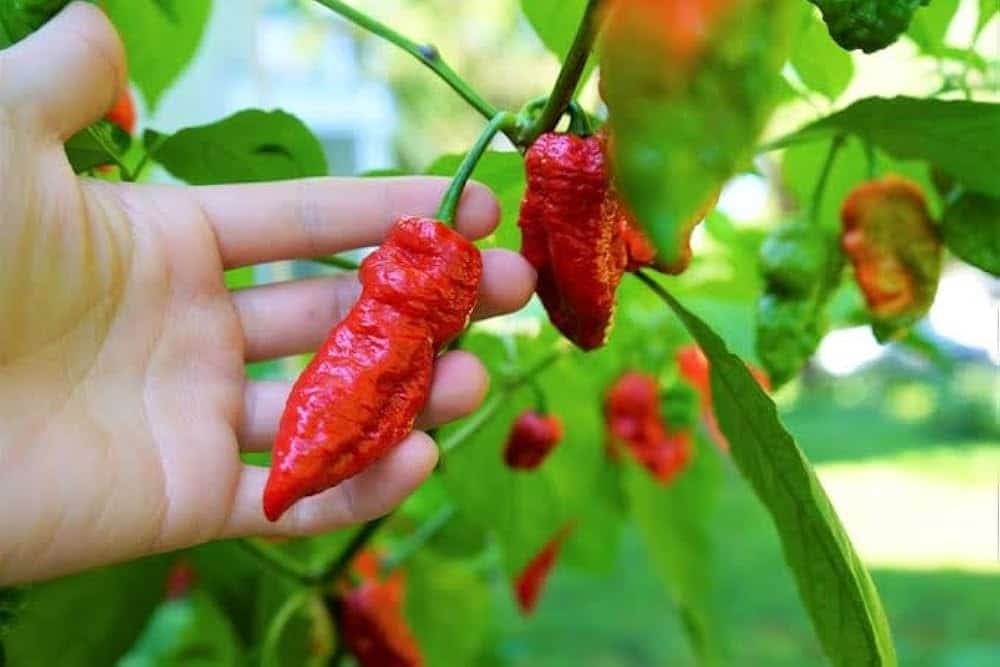
Hand holding ripe red Bhut Jolokia pepper.
- Region: North East India
- Characteristics: Extreme heat, fruity flavour.
One of the hottest chillies in the world, Bhut Jolokia is a favourite for those who enjoy intense spiciness. Apart from its culinary uses, it is also employed in traditional medicine and even as a natural deterrent for wildlife. It is often used sparingly in curries and chutneys to add an explosive kick.
Jwala Chilli
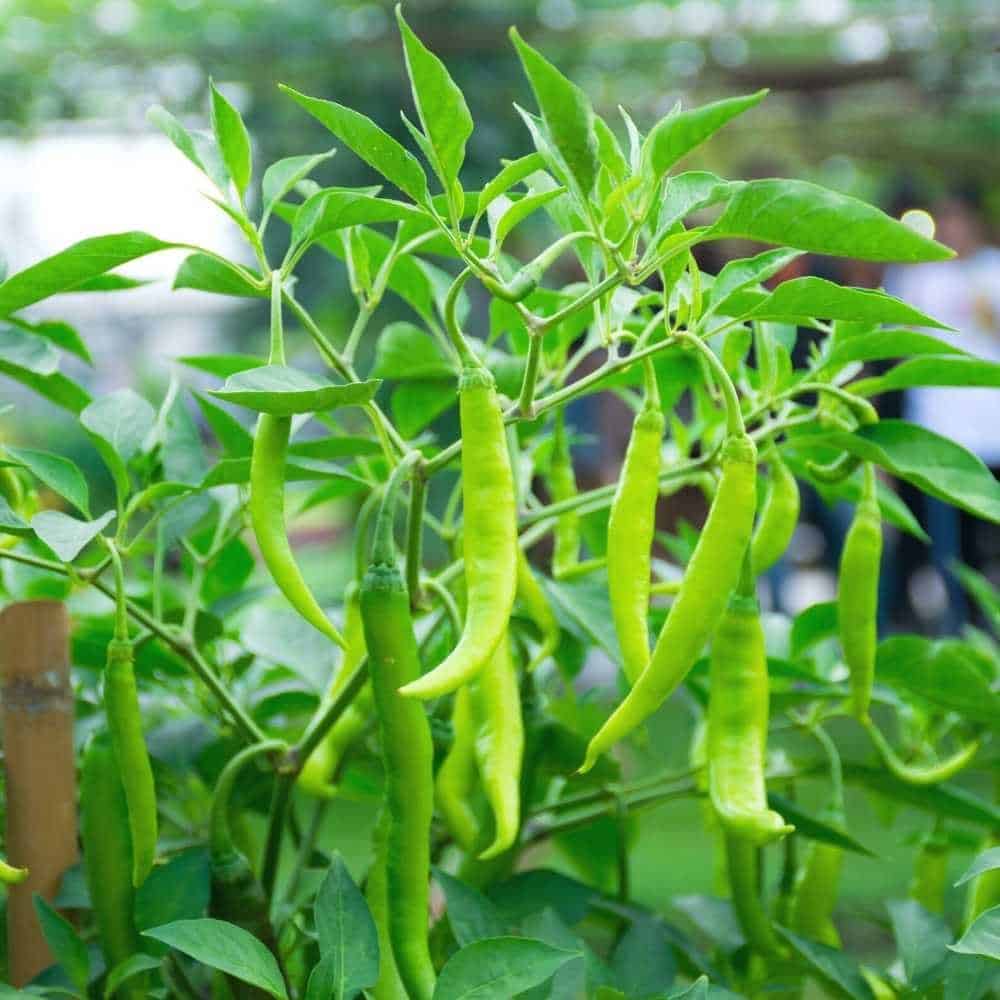
Jwala green chillies growing on a lush plant.
- Region: Gujarat
- Characteristics: Bright green, high pungency.
A versatile variety used in everyday cooking across Gujarati households. Jwala chillies are often used fresh in chutneys and pickles and as a garnish, adding a vibrant kick to dishes. These chillies are harvested early, which gives them their bright green colour and tangy flavour profile.
Kanthari Chilli
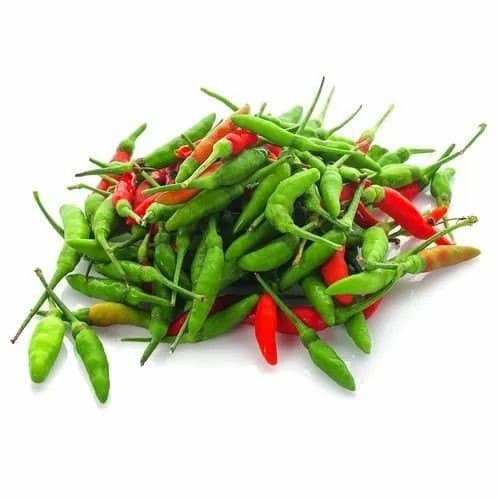
Green and red kanthari chillies, freshly picked.
- Region: Kerala
- Characteristics: Small size, fiery heat.
Kanthari chillies add a robust punch to South Indian dishes, reflecting Kerala’s love for bold flavours. They are often used in fish curries and coconut-based gravies, enhancing their spiciness and aroma. Known for their medicinal properties, Kanthari chillies are also raw for health benefits.
Dhani Chilli
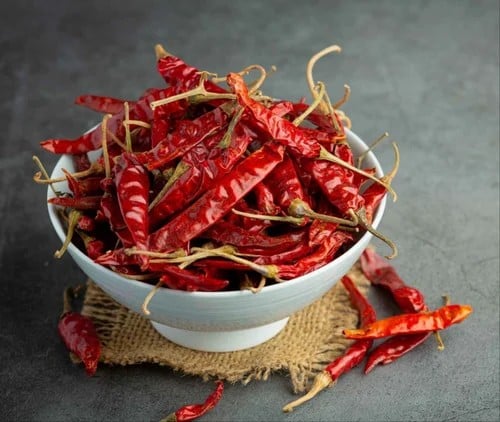
Dried red chillies in a white bowl.
- Region: Manipur
- Characteristics: Vibrant red, intense heat.
A staple in Manipuri cuisine, it brings a distinct flavour to local dishes. Dhani chillies are often used in fermented dishes and chutneys, offering a unique blend of heat and tanginess. They are an essential part of the region’s traditional spice mixes.
How to Use Chillies in Indian Cooking?
Chillies are a staple in Indian cooking, used to add heat, flavour, and colour to dishes. They can be used fresh, dried, powdered, or as a paste, depending on the recipe. Whole chillies are often tempered in hot oil to infuse their flavour into dals and curries. Chilli powder is commonly added to spice blends and masalas for depth and heat. Pickled or ground chillies add a tangy, fiery kick to chutneys and side dishes.
Whole vs. Powdered
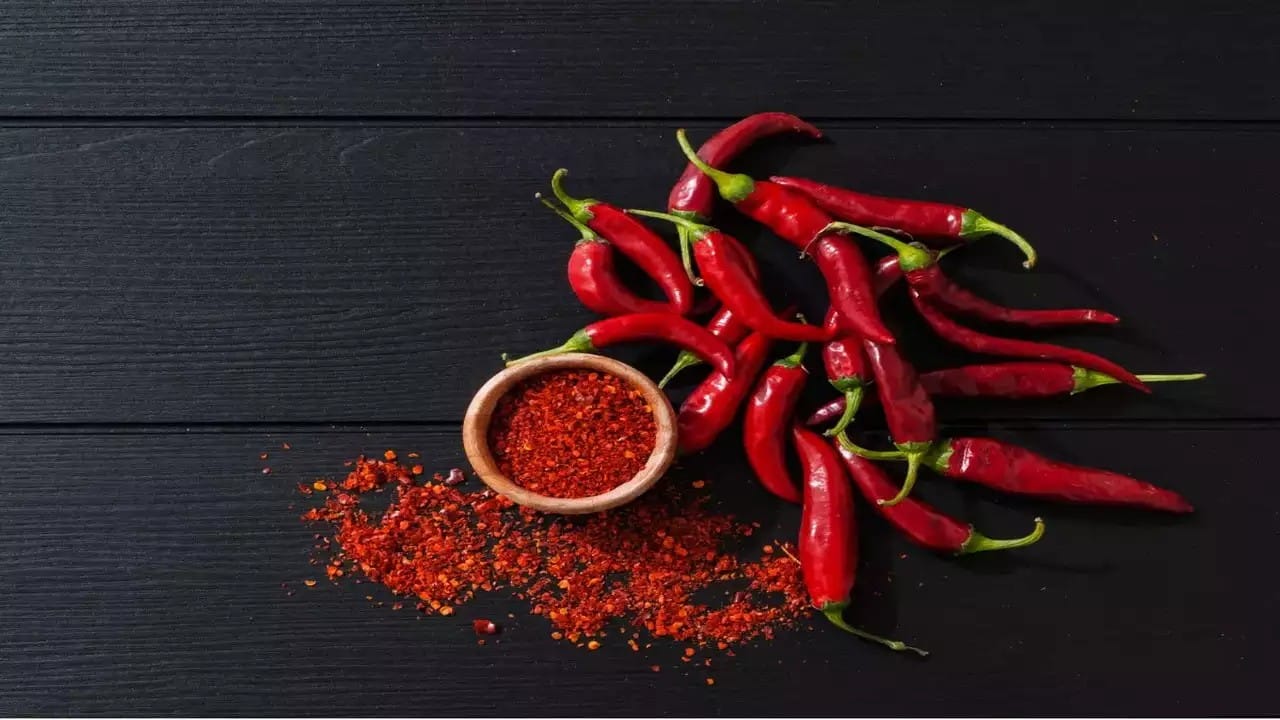
Red chillies and chilli powder on black background
Whole chillies bring concentrated flavours and aromatic oils, while powdered chillies ensure an even distribution of heat in dishes. Each form contributes differently to the overall taste and texture, depending on the recipe. For example, whole Kashmiri chillies are often used in tempering to infuse oils with their colour, while powdered forms are ideal for smooth gravies. For their versatility, Byadgi and Guntur chillies are popular in whole and powdered forms.
Pairing with Other Spices
Pair chillies like Bird’s Eye chilli with complementary spices like cumin, turmeric, or coriander to enhance the complexity of your dish and achieve a good flavour. Experimenting with combinations can unlock unique flavours and elevate traditional recipes. For instance, the smoky heat of Bhut Jolokia pairs well with the earthiness of cumin, creating a balanced yet fiery flavour profile that packs a punch of heat. In Kerala, Kanthari chillies are often combined with black pepper for extra heat.
Conclusion
Chillies are integral to Indian cuisine, offering various flavours and heat levels. Each variety adds a unique touch to dishes, from the fiery Bhut Jolokia to the subtle Mathania Mirch. Exploring the diverse world of chillies enhances flavours and introduces various health benefits. Whether it’s the vibrant Kashmiri mild chilli, one of the most popular varieties, or the pungent Guntur Chilli from the Guntur district of Andhra Pradesh, their presence in Indian recipes is undeniable. Embrace the heat, savour the spice, and let the myriad of chillies elevate your culinary experience.
Frequently Asked Questions
Which is the hottest chilli in India?
Bhut Jolokia, or Ghost Pepper, from the northeastern parts of India, including Arunachal Pradesh, is the hottest chilli in the country. Known for its intense heat, it is widely used alongside the Carolina Reaper and Trinidad Moruga Scorpion in traditional dishes and even for health benefits.
How many types of chillies are there in India?
India cultivates over 400 varieties of chillies, each offering unique flavours, colours, and heat levels. These varieties contribute to the nation’s diverse and rich culinary heritage.
What is the Scoville Scale?
The Scoville Scale measures the heat or pungency of chillies, including the Bhavnagri chilli pepper, by quantifying their capsaicin content, which contributes to its spicy heat. Bhut Jolokia, a prominent Indian chilli, scores exceptionally high on this scale due to its intense flavour, making it one of the spiciest chillies in the world.







